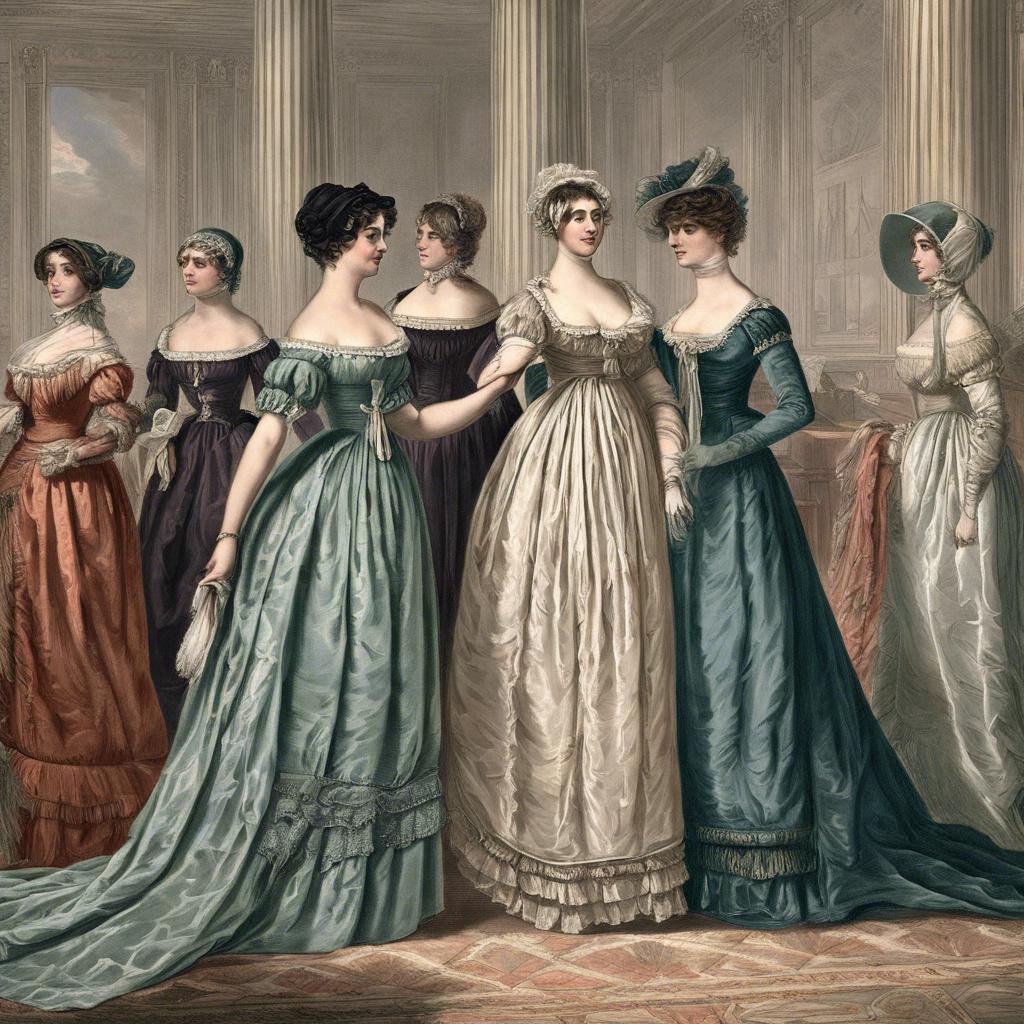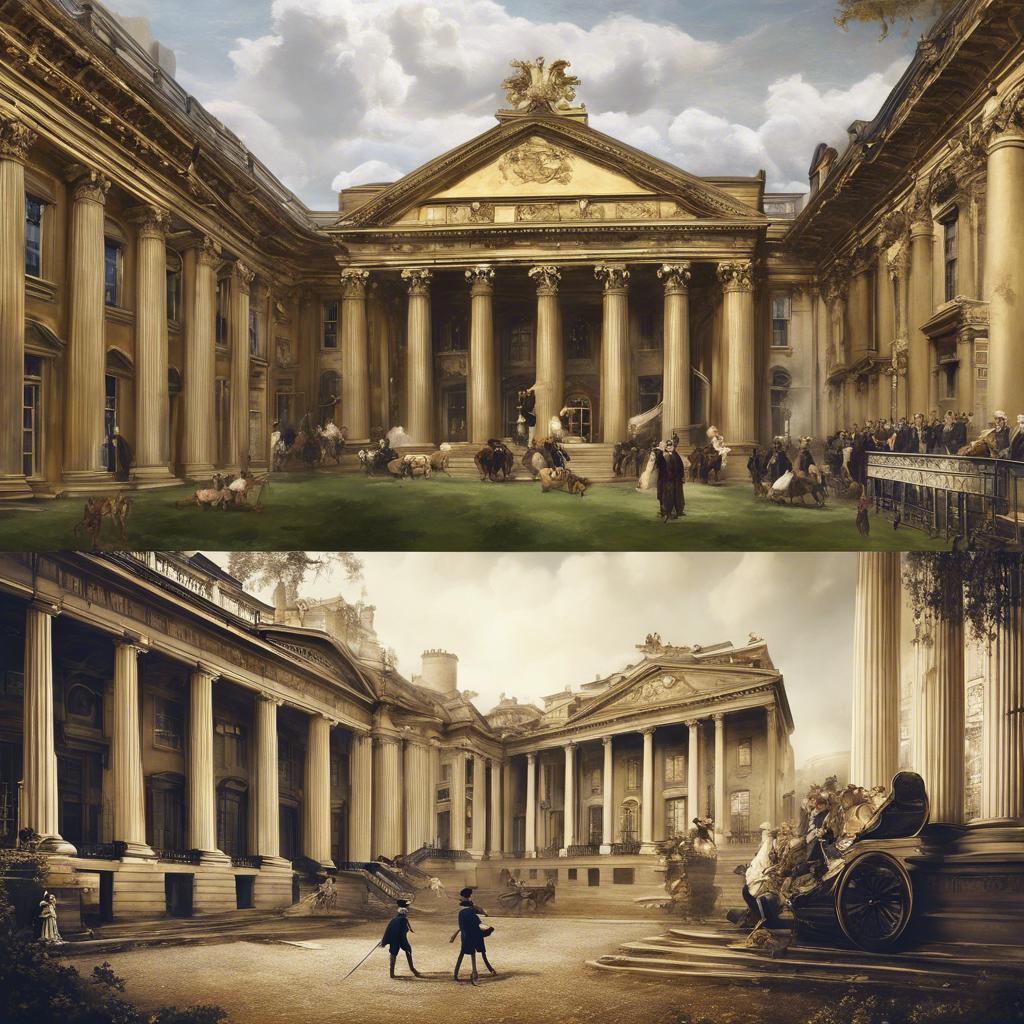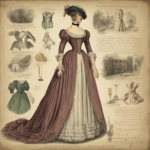The Regency Era in 19th century England and the Gilded Age in America are both fascinating periods in history that experienced significant social, political, and cultural transformations. In this article, we will analyze and compare the similarities and differences between these two distinct eras, shedding light on the key events, ideologies, and characteristics that shaped the course of history during the Regency Era and Gilded Age. Join us on a journey through time as we delve into the complexities of these influential historical periods.
Step Into the World of Cheryl Bolen
Dive into the enchanting stories of love, intrigue, and elegance set in the Regency Era. Cheryl Bolen's novels offer timeless romance and captivating tales that will leave you wanting more.
Explore Cheryl Bolen's Books Now
Regency Era: Social Norms, Fashion, and Literature Comparison
In the Regency Era, social norms were defined by strict etiquette and adherence to societal expectations. Women were expected to be modest and demure, while men were required to be chivalrous and respectful. Fashion during this time was characterized by empire waist dresses for women and tailored suits for men. Literature also flourished in the Regency Era, with famous authors such as Jane Austen writing iconic works like Pride and Prejudice.
On the other hand, the Gilded Age saw a shift in social norms towards excess and opulence. High society during this time flaunted their wealth and indulged in lavish parties and extravagant lifestyles. Fashion in the Gilded Age was characterized by elaborate ball gowns for women and tailored suits with top hats for men. Literature also saw a change during this period, with authors like Edith Wharton exploring themes of wealth, power, and social class in their works.
the Regency Era and the Gilded Age were vastly different in terms of social norms, fashion, and literature. While the Regency Era was marked by restraint and elegance, the Gilded Age was a time of indulgence and extravagance. Despite these differences, both periods left a lasting impact on history and continue to fascinate readers and historians to this day.
Gilded Age: Industrialization, Wealth Disparities, and Cultural Transformations
During the Regency era, which spanned from 1811 to 1820, England saw a shift in cultural norms and aesthetics. With a focus on elegance, refinement, and the arts, this period was marked by the reign of King George IV and the Prince Regent. The Regency era was characterized by a more relaxed approach to fashion, architecture, and social interactions, emphasizing grace and sophistication.
In contrast, the Gilded Age in America, roughly spanning from the 1870s to the early 1900s, was a time of rapid industrialization, unprecedented wealth accumulation, and stark wealth disparities. This era saw the rise of industrial titans such as Andrew Carnegie and John D. Rockefeller, who amassed immense fortunes through industries like steel, oil, and railroads. The Gilded Age was marked by opulence, excess, and ostentatious displays of wealth.
While the Regency era and the Gilded Age were both periods of significant cultural transformations, they differed greatly in their societal norms, economic structures, and values. The Regency era focused on elegance and refinement, while the Gilded Age emphasized industrialization, wealth accumulation, and material prosperity. Despite these differences, both eras played crucial roles in shaping the cultural landscapes of their respective countries.
Contrasting Political Landscapes: Monarchy vs Democracy
In the Regency Era, monarchies held significant power over their subjects. The monarch’s rule was absolute, with little to no checks and balances in place. Decisions were made by the ruling monarch and their court, with little regard for the voice of the common people. This top-down approach to governance often led to inequality and dissatisfaction among the populace.
On the other hand, the Gilded Age in the United States saw the rise of democracy as the dominant political system. Democracy allowed for greater participation from the general population in decision-making processes. Elected officials represented the interests of their constituents, and laws were passed based on the will of the majority. This bottom-up approach to governance aimed to give a voice to all citizens, regardless of social status.
While the Regency Era emphasized the importance of tradition and hierarchy, the Gilded Age focused on progress and individual rights. Monarchies upheld centuries-old customs and laws, while democracies championed innovation and personal freedom. Both political landscapes had their merits and drawbacks, shaping the societies they governed in unique ways.
Navigating the Legacy of Regency and Gilded Eras: Lessons for Modern Society
The Regency era and the Gilded Age are two distinct periods in history that have left lasting legacies on society. While both eras were marked by opulence and social change, they also had their unique characteristics that set them apart.
Regency Era:
- Characterized by the reign of King George IV in the early 19th century.
- Known for its emphasis on elegance, manners, and refinement.
- Saw the rise of Jane Austen and other literary figures.
Gilded Age:
- Occurred in the late 19th to early 20th century America.
- Marked by rapid industrialization, economic growth, and wealth accumulation.
- Exemplified by figures like Vanderbilt, Carnegie, and Rockefeller.
Concluding Remarks
both the Regency Era and the Gilded Age marked periods of significant social, political, and economic change in their respective societies. While the Regency Era was characterized by a focus on elegance, refinement, and societal norms, the Gilded Age was defined by rapid industrialization, immense wealth disparity, and the rise of big business.
Despite their differences, both eras left a lasting impact on their societies that continues to be felt to this day. By understanding the similarities and differences between the Regency Era and the Gilded Age, we can gain valuable insights into the complexities of history and the ways in which historical events continue to shape our world.


